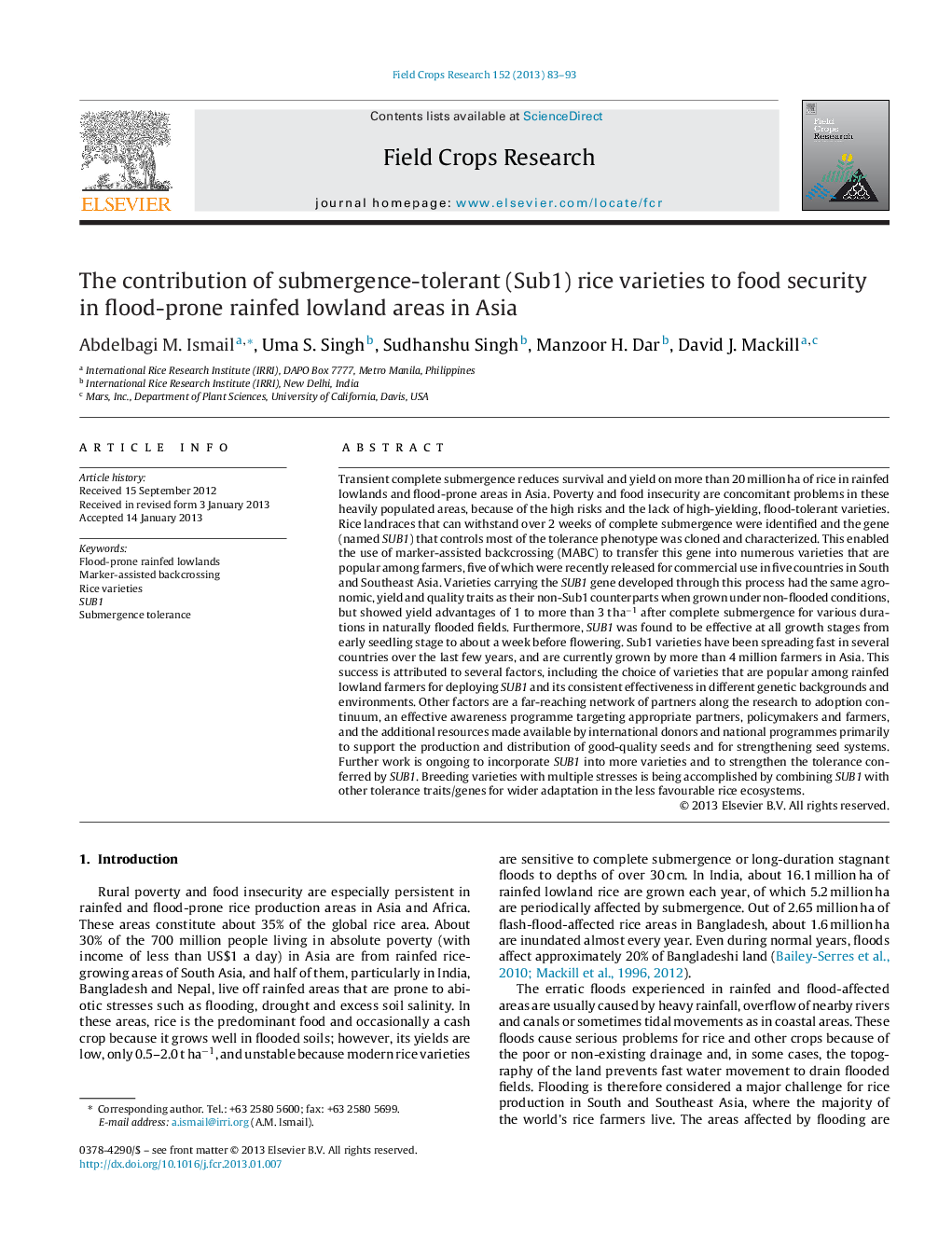| Article ID | Journal | Published Year | Pages | File Type |
|---|---|---|---|---|
| 4510172 | Field Crops Research | 2013 | 11 Pages |
Transient complete submergence reduces survival and yield on more than 20 million ha of rice in rainfed lowlands and flood-prone areas in Asia. Poverty and food insecurity are concomitant problems in these heavily populated areas, because of the high risks and the lack of high-yielding, flood-tolerant varieties. Rice landraces that can withstand over 2 weeks of complete submergence were identified and the gene (named SUB1) that controls most of the tolerance phenotype was cloned and characterized. This enabled the use of marker-assisted backcrossing (MABC) to transfer this gene into numerous varieties that are popular among farmers, five of which were recently released for commercial use in five countries in South and Southeast Asia. Varieties carrying the SUB1 gene developed through this process had the same agronomic, yield and quality traits as their non-Sub1 counterparts when grown under non-flooded conditions, but showed yield advantages of 1 to more than 3 t ha−1 after complete submergence for various durations in naturally flooded fields. Furthermore, SUB1 was found to be effective at all growth stages from early seedling stage to about a week before flowering. Sub1 varieties have been spreading fast in several countries over the last few years, and are currently grown by more than 4 million farmers in Asia. This success is attributed to several factors, including the choice of varieties that are popular among rainfed lowland farmers for deploying SUB1 and its consistent effectiveness in different genetic backgrounds and environments. Other factors are a far-reaching network of partners along the research to adoption continuum, an effective awareness programme targeting appropriate partners, policymakers and farmers, and the additional resources made available by international donors and national programmes primarily to support the production and distribution of good-quality seeds and for strengthening seed systems. Further work is ongoing to incorporate SUB1 into more varieties and to strengthen the tolerance conferred by SUB1. Breeding varieties with multiple stresses is being accomplished by combining SUB1 with other tolerance traits/genes for wider adaptation in the less favourable rice ecosystems.
► Submergence reduces rice yield on 20 million ha in Asia, worsening food insecurity ► The gene controlling tolerance (SUB1) cloned and transferred into several varieties ► Sub1 varieties had yield advantages of 1 to over 3 t ha−1 following submergence ► These varieties reached over 3.8 million farmers in Asia within 3 years of release.
